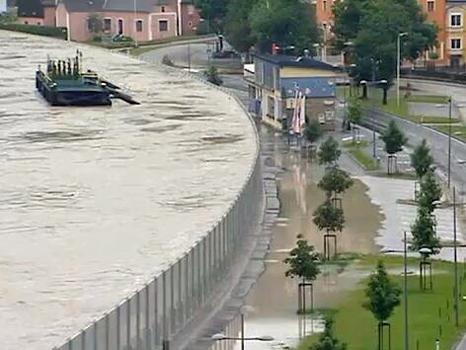
The current flooding in Europe is producing some truly shocking scenes. Despite this being a still image there is a real sense of the power and energy of the river in flood. (Mainz, Germany)
 The current flooding in Europe is producing some truly shocking scenes. Despite this being a still image there is a real sense of the power and energy of the river in flood. (Mainz, Germany)
0 Comments
This is some amazing footage taken from the TIV2 (Tornado interception vehicle). The TIV is practically a tank operated by a series of film makers and scientists working in Tornado Alley. Their website can be found here http://www.tornadoalleymovie.com/. Can you imagine being inside this thing when a tornado passes over? Certainly different to the famous scene in 'Twister' ;-)
How could you use this in lessons? In terms of enquiry I think this is really powerful footage for creating the 'need to know'. I might play the audio only at the start of the lesson and ask students to hypothesise about what is making the extraordinary noise. Or you could play the video and ask students a series of multiple choice questions based on tornadoes e.g. what is the maximum windspeed recorded during a tornado? Students could also come up with their own questions based on the footage which they work towards answering in the lesson. You could show students an image of the TIV2 (see below) and ask them what they think this vehicle is used for before showing them this footage. How would you use it?  I woke up this morning to news of two extreme weather events on either side of the globe. Only yesterday was I leading year 13 revision sessions on Tornadoes and Cyclones so reading the stories from Bangladesh and Texas this morning hit home. When teaching about hazards and disasters it is easy to get bogged down in the numbers. We drill students with the step by step physical processes that create these phenomena (well explained here http://news.bbc.co.uk/1/hi/5328524.stm). We boil down impacts into bullet pointed lists of economic, social, political and environmental and evaluate responses with a focus on "hitting assessment objective 2 in the examination". There is a danger that our approach to the content is callously mechanical. Are we doing our students a diservice in this regard? Of course it is vitally important that they understand the subject well enough to get the grades that they deserve and as teachers it is our job to ensure that we provide them with the best opportunity to do so but sometimes I feel that the focus is skewed too far away from the human cost. So as I discuss these events with my students today I will encourage us to take a moment to consider how the hundreds of thousands of people being evacuated from their homes in Bangladesh are feeling http://www.bbc.co.uk/news/world-asia-22537615. Or how those people who have lost their homes in Texas will pick themselves up and carry on http://www.bbc.co.uk/news/world-us-canada-22549952. If students appreciate the power of natural processes and respect the human cost, they will write about them with more conviction, enthusiasm and sensitivity; something I expect of any serious geographer. |